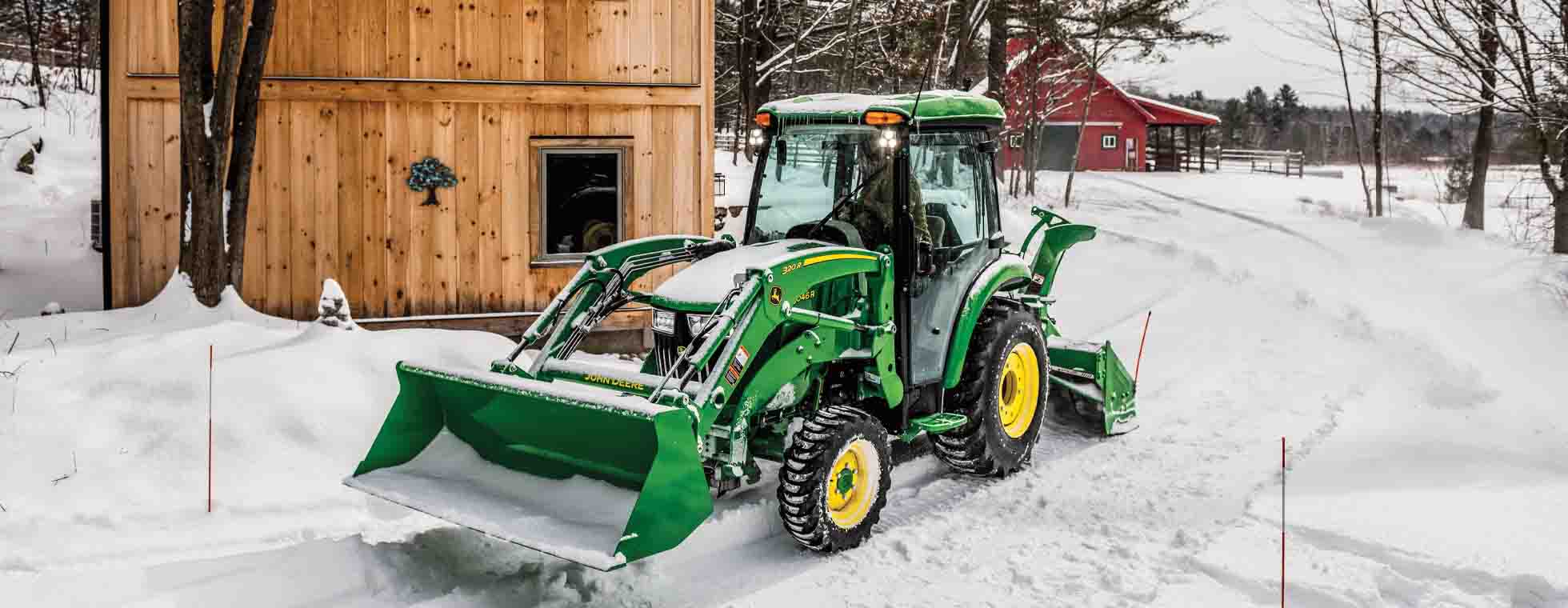
As the leaves fall and the temperatures drop, efforts around the home turn toward preparing for the coming winter season. Typically, the last bits of yardwork are wrapped up before it’s time to winterize yard machines and put them in storage. But why stash a compact tractor when it could prove to be a valuable year-round tool?
With some simple adjustments and attachments, you can turn your compact tractor into a powerful snow-removal machine that can handle any snowfall. We’ll show you how to choose the right attachments, operate your tractor safely in cold conditions, and enjoy the benefits of having a versatile tractor all year round.
-edit.jpg?sfvrsn=ea397470_1)
To help decide which attachment or attachments will be best for handling snow, the first step is to think about how the tractor is currently outfitted and decide which attachment or attachments will be best for handling snow. Tractors equipped with a front loader already have snow-removal potential, and it’s likely that a loader bucket can easily be swapped for a front snow blade.
Tractors featuring rear three-point hitches offer a range of options for rear blade and blower attachments. Similarly, tractors equipped with a front hitch may be compatible with a front blower.
Related article: Buy These Five Compact Tractor Attachments and Accessories First
Once you have reviewed the existing tractor setup, it’s time to take a look at available options and attachments and consider both their benefits and drawbacks.
Sub-zero temps and whipping winds are no match for a heated cab, making it one of the first additions to consider when looking to outfit a tractor for winter use. Keep in mind not all cabs are easy to put on or remove from the tractor, so be sure to consider if the cab will be a desirable year-round feature prior to choosing one. It might be worth investing in a cab that stays on year-round for a tractor without air conditioning that’s used during warmer weather months.
A tractor equipped with a front-end loader can be used as a plow, but it’s important to practice and work slowly at first. It’s crucial to find the proper bucket height and tilt while plowing to avoid damaging the bucket and loader arms as well as the surface, whether a driveway, sidewalk or roadway. Blades, both front and rear, are more intuitive to use for plowing and are naturally more forgiving.
Buckets have the upper hand in situations requiring scooping or dumping, while blades offer only pushing or pulling capabilities. However, most blades can be angled, providing windrowing capabilities to push snow to the side of the tractor as it travels.
Using a blower means skipping the piling and dumping steps that may be required when using a blade, bucket or combination of the two. A variety of rear three-point blower attachments exist, but before committing to a rear blower purchase, keep in mind that you’ll be required to operate the tractor in reverse. This may seem obvious and may not be a concern when clearing short stretches but blowing snow from a long driveway entirely in reverse could prove to be a literal pain in the neck.
Front-end blowers remove driving backward from the equation, but the tradeoff is the cost. Tractors are commonly outfitted for three-point rear attachments, but front-end blowers may require additional modifications, which can push the cost above that of a rear attachment. Again, consider the tractor’s current setup when choosing a blower.
Most tractors can operate in winter conditions, but depending on regional temperature ranges, it may be necessary to fill up with winterized diesel suitable for cold conditions. Using inadequate diesel fuel during low temperatures can result in fuel gelling, which can clog fuel system components and reduce engine performance.
If the tractor is used off-road or on gravel roads, it may warrant extra traction provided by tire chains. There are a variety of chain styles to choose from that will help prevent sliding and slipping on slick surfaces, especially when plowing heavy snow. However, driving on paved surfaces with chains on is not recommended, as the chains, surface, or both may be damaged.
Operating a cold engine in cold weather can prove extra hard on engine components; be sure to let the engine warm up to the optimum operating temperature as specified by the manufacturer.
After cleaning up from a nasty winter storm, remember to clear off excess snow before parking a tractor to keep ice and water from accumulating and contributing to rust.
With the variety of attachments and enhancements available for most compact tractors, every homeowner can turn this machine into one capable of battling winter’s worst elements.